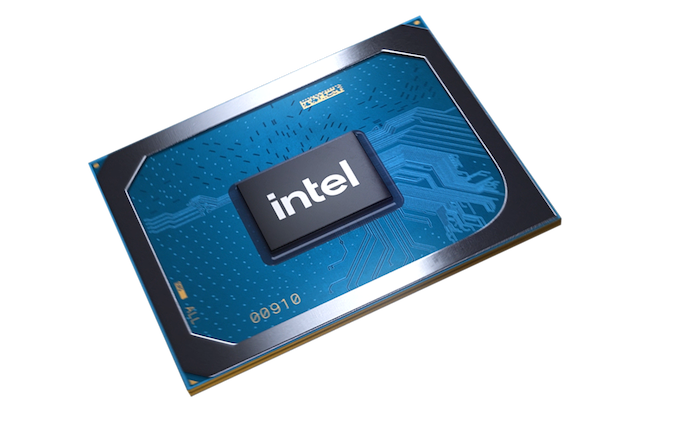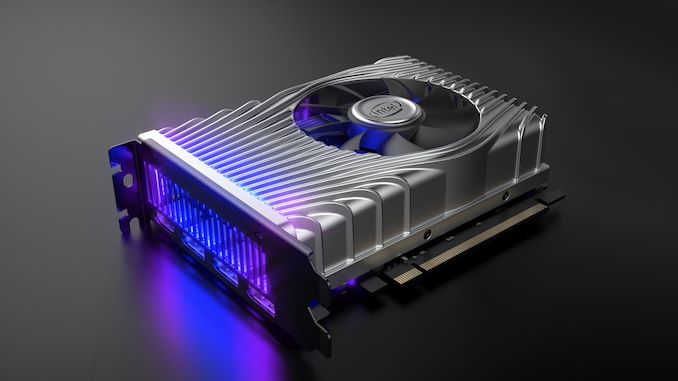Intel’s DG1 GPU Coming to Discrete Desktop Cards Next Year; OEM-Only
by Ryan Smith on October 31, 2020 12:01 PM EST
Alongside today’s launch of Intel’s DG1-based Iris Xe MAX graphics for laptops, the company is also quietly confirming that DG1 will be coming to desktop video cards as well, albeit in a roundabout way.
Though still in the early stages, a hereto unnamed third party has reached an agreement with Intel to produce DG1-based desktop cards. These cards, in turn, will be going into OEM desktop systems, and they are expected to appear early next year.
The very brief statement from Intel doesn’t contain any other details. The company isn’t saying anything about the specifications of the OEM desktop cards (e.g. clockspeeds), nor are they naming the third party that will be making the cards, or any OEMs who might be using the cards. For today at least, this is a simple notification that there will be OEM cards next year.
As for the market for such cards, there are a couple of avenues. OEMs could decide to treat the cards similarly to how Iris Xe MAX is being positioned in laptops, which is to say as a cheap add-in accelerator for certain GPU-powered tasks. Intel has baked a significant amount of video encode performance into the Xe-LP architecture, so the cards could be positioned as video encode accelerators. This would be very similar to Intel’s own plans, as the company will be selling a DG1-based video encode card for servers called the SG1.
Alternatively, the third party may just be looking to sell the DG1 card to OEMs as simple entry-level discrete graphics cards. Based on what we know about Xe MAX for laptops, DG1 is not expected to be significantly more powerful than Tiger Lake integrated graphics. However, as pointed out by our own Dr. Ian Cutress, it should be a good bit better than any comtemporary Atom’s integrated GPU.

Sadly, the OEM card probably won't be as fancy as Intel's DG1 development card










68 Comments
View All Comments
lmcd - Monday, November 2, 2020 - link
Intel's support lifecycle for wireless cards and its performance during the support window are quite different. Intel's support lifecycle might not be perfect but its performance as compared to Qualcomm and Realtek is far superior in my experience. A recent, decent dual-band Realtek ping spiking to over 200ms locally, 8 ft and one wall away (vs ~20ms spikes for an Intel dual-band card). I've also watched a Qualcomm unit fail to properly do WiFi handoff way too many times at work in spite of correctly-configured roaming.Also worth remembering these are entirely different teams in the company.
Spunjji - Monday, November 2, 2020 - link
🤭 Someone's never tried running games on Intel GPU drivers...vladx - Monday, November 2, 2020 - link
GPUs are not used only for gaming, your trolling is so obvious. AnandTech themselves said these iGPUs are not targeting gamers as their main audience.Alistair - Saturday, October 31, 2020 - link
These are worth $50 USD?eastcoast_pete - Sunday, November 1, 2020 - link
Any words on what kind of RAM those desktop cards will use?shabby - Sunday, November 1, 2020 - link
Does it matter? Selling to oems only is clearly an admission that the cards will be slow.Spunjji - Monday, November 2, 2020 - link
Presumably LPDDR4Xbrucethemoose - Sunday, November 1, 2020 - link
No AV1 encode though :(That would've been a killer use case.
Alexvrb - Sunday, November 1, 2020 - link
"DG1 is not expected to be significantly more powerful than Tiger Lake integrated ... it should be a good bit better than any comtemporary Atom’s integrated GPU."I think you're looking at this all wrong, Ryan. DG1 discrete isn't much more powerful than TOP OF THE LINE Tiger Lake ($Texas). Compared to the kind of CPUs it will be paired with (older architectures, lower-end TGL - basically various chips with cut-down or NO graphics, even AMD) it will be a GREAT performer. If you use the i3 1125G4 as a comparison point, full DG1 has ~2.5X more raw power and more memory bandwidth. On the desktop you could potentially achieve the same (or slightly better) gaming results using a cheap i3 quad and a cheap DG1 as you could get from a top-line Intel chip... at a lower total cost.
I don't think they'll pair many of these with Atom-class CPUs, nor too many 2C Core models. But there's a lot of budget 4C chips out there which could be utilized in entry level gaming rigs with a cheap dGPU, especially overseas.
Alistair - Monday, November 2, 2020 - link
and yet the first model is just Tiger Lake G7 paired with XE MAX which makes no sense. XE MAX is so slow, I'm not sure what you are trying to say. Even integrated AMD can equal it. I was expecting XE MAX to be double the speed of G7 or AMD integrated, not be the same.This is way to slow for any entry level laptop. RTX 3050 is coming in months for laptops.